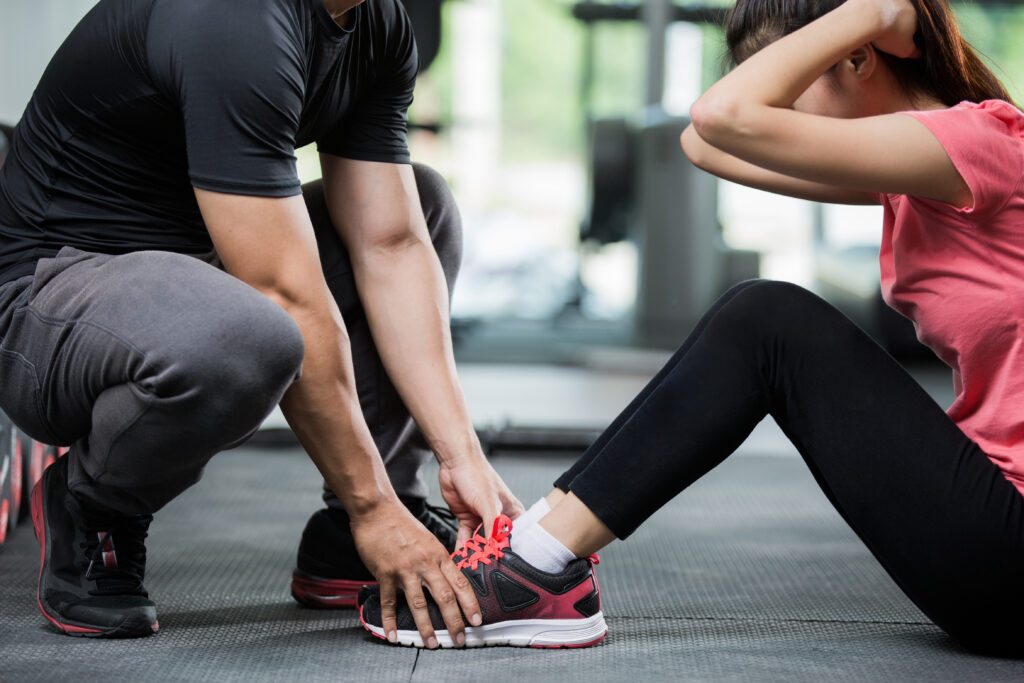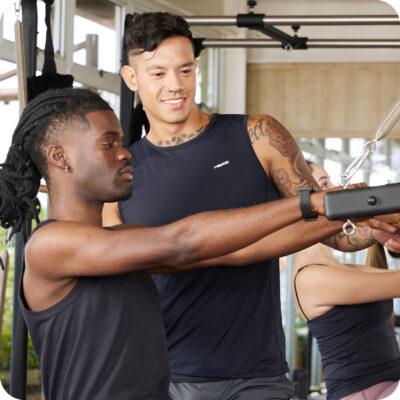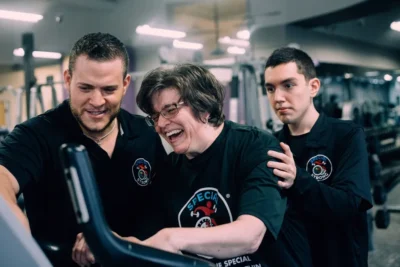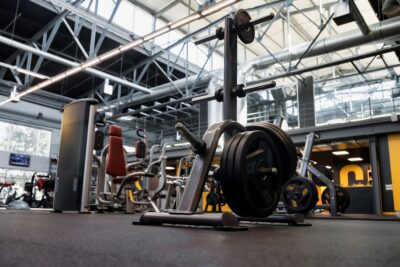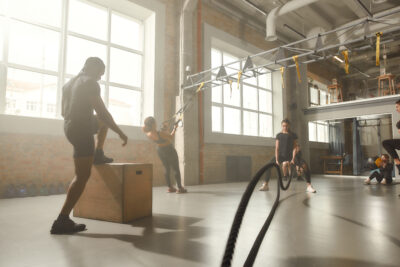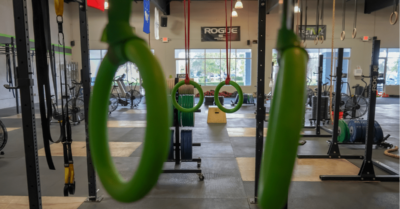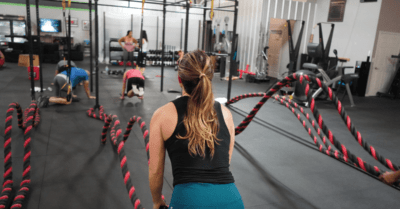Before you train, listen. A personal training assessment or fitness evaluation is a critical onboarding step for personal trainers. Bringing some performance analysis into your early workouts will help you deliver safe, successful training, and create customized workouts that work for your clients’ bodies.
At ABC Glofox, we’re focused on helping gyms and trainers deliver the best possible training experience, and personal training assessments are a core part of it. We’re keen to share what we know, because the only way we grow is by helping our clients to grow. So let’s explore how a quick workout analysis can help you deliver world-class training to each client you work with.
As an added bonus, we’re partners with Trainerize, the world’s leading personal training software – which can help you provide the best possible experience to your clients, 24/7.
Learn More About the Glofox & Trainerize Partnership
3 Common Features in Every Good Fitness Assessment
There are several key considerations that go into a fitness evaluation. Understanding what dimensions matter most will help you get the info you need to deliver personalized coaching and customized training.
1. Body composition
A person’s body composition is the percentage of fat, bone, and muscle in their body. Body composition analysis can tell you a lot about a person’s overall health and workout capacity, but it’s also a wonderful way to gauge changes over time. These essential features will shift and evolve as your training goes on, and you can point back to these essential stats to show how far each client has come.
2. Movement
A functional movement screening is a screening tool used to test core movement patterns used across all of fitness—including deep squats, hurdle steps, incline lunges, shoulder mobility, straight-leg raises, push-ups, and rotary crunches.
This is essential for creating a mobility baseline for clients during your personal training assessment. Few factors can explain the details of someone’s overall fitness like movement. Each person’s movement is shaped by their health and athletic history, and it’s completely natural for movement levels to vary. Checking this vital sign is one of the easiest ways of measuring your client’s ability
3. Work capacity
Work capacity is often measured in one of two different ways. The first involves measuring the capacity for physical fitness work that a person has based on their personal circumstances and the other involves testing the level of output that a person can bring to an individual training session.
Every body is different, and it’s completely natural for work capacity to differ from one client to the next. Whether you focus on a straight-up strength assessment or just learn more about someone’s life, work assessments will help you learn just how hard you can push each client.
The Customer
Engagement Playbook
for Your Fitness
Business
Discover more 8 Steps to Conducting a Movement Assessment
Effective individualized training doesn’t appear out of thin air—it’s created with full knowledge of your client, and that starts with a physical assessment. These eight considerations are all important to include in your personal training assessment:
1. Postural Assessment
Posture is one of the most unrecognized features of overall health, and it’s very important for both training and aging. Understanding a person’s posture can help you to make intelligent decisions for their training plan because posture affects every movement you’ll do during workouts.
Focus on how your clients hold their bodies, any physical compensations in their movements, and the alignment of their overall skeletal structure. That’ll tell you where their weak points and strong points are.
2. Movement Analysis
Fitness and training are all about movement, and understanding how a person moves and what limitations they may have is key. Learning about their range of motion, their comfort levels, and the factors that influence their movement and comfort are essential.
Pay close attention to how each client utilizes their body in different circumstances to understand the full range of movement they possess. This section of fitness appraisal makes it possible to gain several key insights that can be used for goal setting during onboarding.
3. Overhead Squat Assessment
An overhead squat can seem like an intimidating move for clients, but it’s important to remember that they do not always have to lift a heavy weight—or a weight at all. (Body weight is enough!)
The way a person moves through the overhead squat movement can tell you a lot about their mobility, physical limitations, and potential for certain kinds of exercises. This full-body move is a powerful tool for identifying a wide range of features for clients ranging from overall strength to core strength and flexibility.
4. Elevated Heels Modification
A standard squat works various parts of the body, and the elevated heels modification can take the process even deeper. With the elevated heels modification, your client can deepen their squat and shift the work of this move to the quadriceps. This can help you to better understand your client’s physical limitations with the move while highlighting additional parts of the body.
5. Sit-ups
Few fitness moves have survived throughout history quite like sit-ups, and there’s a reason for that—sit-ups reveal what’s going on in your core (and beyond). When we do sit-ups, we lean on our core strength, but that is just the start. Checking your clients’ abilities with this movement can help you get a reference for flexibility, posture, and overall physical fitness.
6. Endurance Analysis
A person’s endurance offers a lot of clues about their overall fitness. Your ability to fire your muscles up for a short time says a lot about your athleticism, but endurance speaks to the deeper fitness happening behind the scenes. A cardiovascular fitness measurement can fit well into this area, as well as other assessments focused on other parts of the body.
The Customer
Engagement Playbook
for Your Fitness
Business
Discover more
The Customer
Engagement Playbook
for Your Fitness
Business
Discover more 7. Flexibility Limitations
Strength is very important for physical fitness, but flexibility is equally as important. Not only can flexibility determine what kind of moves a person can do to enhance their strength, but it can also be a strong indicator of their potential for injury. People who have higher flexibility levels are less likely to be injured during workouts, which can be highly important information for a trainer to know.
8. Recovery Levels
Recovery is an assessment that should be measured over time. After a workout, ask your clients what their recovery looks like. Where did they end up sore, and how long did it last? Understanding this can help to set reasonable limitations during training sessions.
Taking Your Personal Training Assessment to the Next Level
It’s one thing to write down the performance of your members in a notebook or Excel spreadsheet, but how can you really track their progress like that?
With ABC Glofox, you can track exactly when your members step into your gym or studio, how often they come in, and even create automated messages to keep them going throughout their fitness journey. This not only provides an exceptional experience to your members, which will have them coming back for more, it will also make your life so much easier.
Along with saving up to 20% of your time on admin tasks, on average our members double their income in just 18 months.
If you’re ready to make your life easier, you can book a call with a member of our team and they can show everything that ABC Glofox has to offer.

